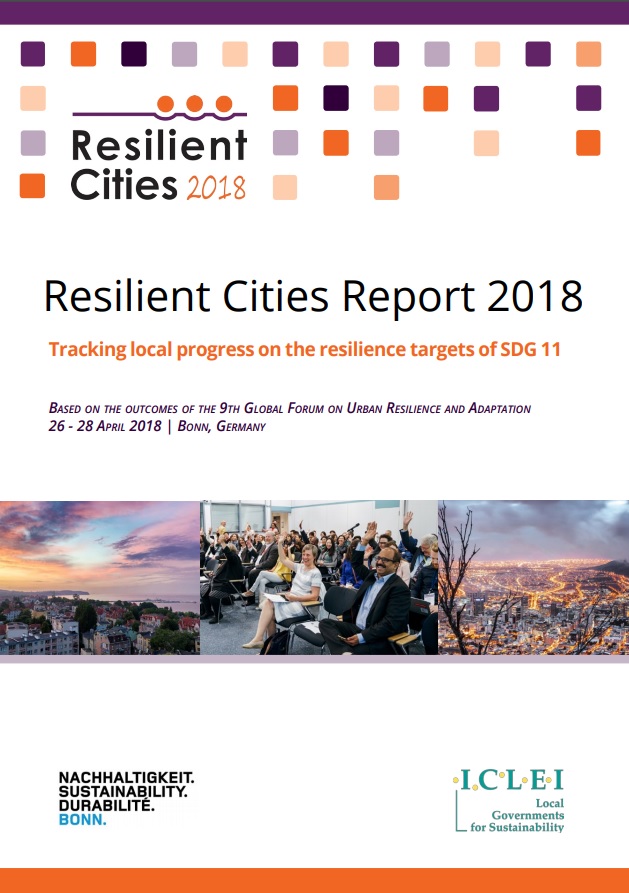Resilient Cities Report 2018
This report reflects the outcomes of the Resilient Cities 2018 congress and global developments in the field of urban resilience and climate change adaptation.


Resilient Cities is the annual global forum on urban resilience and adaptation convened in Bonn, Germany.
The congress series provides an international platform to share the latest knowledge, good practices, challenges, and innovations for creating more resilient cities. It also serves as an annual meeting point to track local progress on the resilience targets of Sustainable Development Goal 11 to make cities inclusive, safe, resilient, and sustainable. The congress outcomes present a snapshot of the state of urban resilience, building on discussions and developments from previous years.
As an official Cities and Regions Talanoa Dialogue event, the 9th edition of Resilient Cities attempted to answer the three main questions of where we are, where we want to go, and how we get there in achieving a resilient and sustainable urban future.
Participants discussed the incremental and transformative changes required to advance on the resilient development pathway. In focus were: (1) how to strengthen multilevel governance in order to achieve the Paris Agreement and Agenda 2030; (2) how to yield resilience and sustainability benefits from nature-based solutions; (3) how to reinforce multi-stakeholder collaboration and bring key resilience partners together, including the private sector, the insurance industry, climate scientists, and community leaders.
The sessions addressed emerging links between urban resilience and resource efficiency/circular economy pathways and explored the growing challenges of Big Data and digitalization for cities and regions. Participants also shared best practices for ensuring resilient food systems, enhancing social cohesion, and citizen participation in resilience building efforts.
This report reflects the outcomes of the Resilient Cities 2018 congress and global developments in the field of urban resilience and climate change adaptation. The following pages highlight specific tools, initiatives, case studies, and solutions presented from local governments and practitioners around the world. The findings are cross-referenced to additional resources.